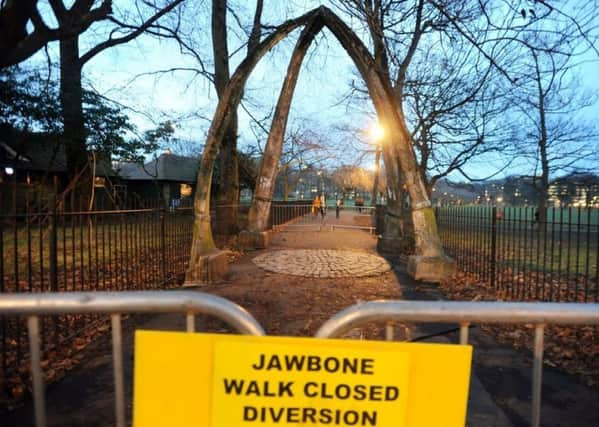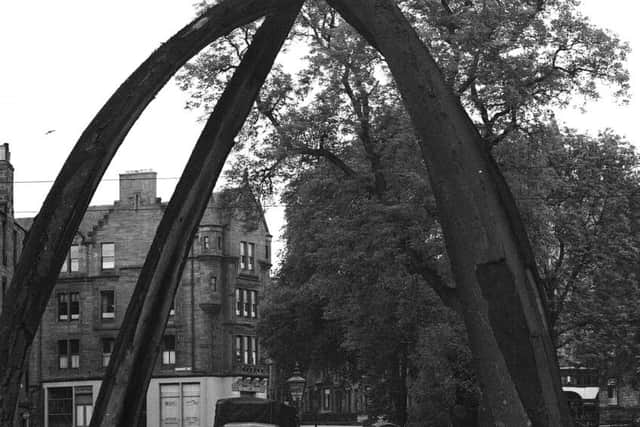Jawbone work hampered after company goes bust


The Jawbone Arch was removed in 2014 after the much-loved landmark’s deteriorating condition saw it branded a danger to passing pedestrians.
The four bones were placed into storage for six months to dry out before restoration began, with hopes high that they would be back in place by the end of last year.
Advertisement
Hide AdAdvertisement
Hide AdHowever, the unique structure will now not be re-installed until later this year after the company conserving them went into liquidation midway through the project.


Work on the bones is being co-ordinated by the city council and Edinburgh World Heritage and news of the delay emerged in an update sent to community group Friends of the Meadows and Bruntsfield Links.
Heather Goodare, the group’s convener, said it was disappointing that work to repair the 19th century landmark had taken so long to complete.
She said: “It’s all very frustrating and we can’t do anything about it. It’s been going on for months and years.
Advertisement
Hide AdAdvertisement
Hide Ad“It’s just taking forever and the council has put in some uplighting for when they come back and it’s all hanging for the moment. It’s quite ridiculous.”


In a joint statement to the group, the city council and EWH revealed previous “poor quality” repair attempts had been a key reason as to why the bones had fallen into disrepair.
The said that when work started, conservators found previous attempts “had been carried out using inappropriate materials such as car body filler and cement”.
On top of this it was discovered that the arch’s concrete foundations had been trapping water in the bones and causing them to decay.
Advertisement
Hide AdAdvertisement
Hide AdThey went on to say the “poor” repairs had since been removed and that the bones’ recesses were then filled with natural lime mortar where necessary.
The bones have also been given a temporary shelter coating of lime for protection from the elements, while their corroded iron fixings have been replaced with new stainless steel ones.
Nicholas Hotham, head of external relations at Edinburgh World Heritage, admitted the work had “taken a while” but said he hoped the bones would be back in place by late spring or summer.
Mr Hotham said the complex nature of the job also meant it had taken longer than normal to find a suitable replacement to complete the conservation work.
Advertisement
Hide AdAdvertisement
Hide AdHe said: “It’s a very complex conservation challenge – we aren’t talking about stone or slate, we are talking about a natural organic material.
“We wanted to do a state of the art conservation project. It’s a complex problem and we understand residents are frustrated but we are working as hard as we can.”
Richard Lewis, culture convener at the city council, said: “Just as the conservation treatment was completed, the appointed specialist went into liquidation.
“This had a number of serious implications especially as this is such a unique conservation project.
“We are working in partnership with Edinburgh World Heritage and a new contractor to reinstate the Jawbone Arch.”